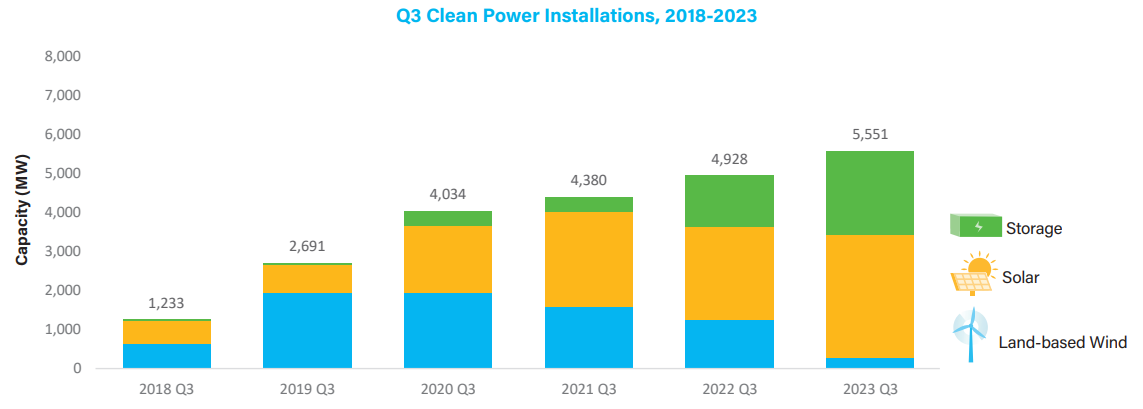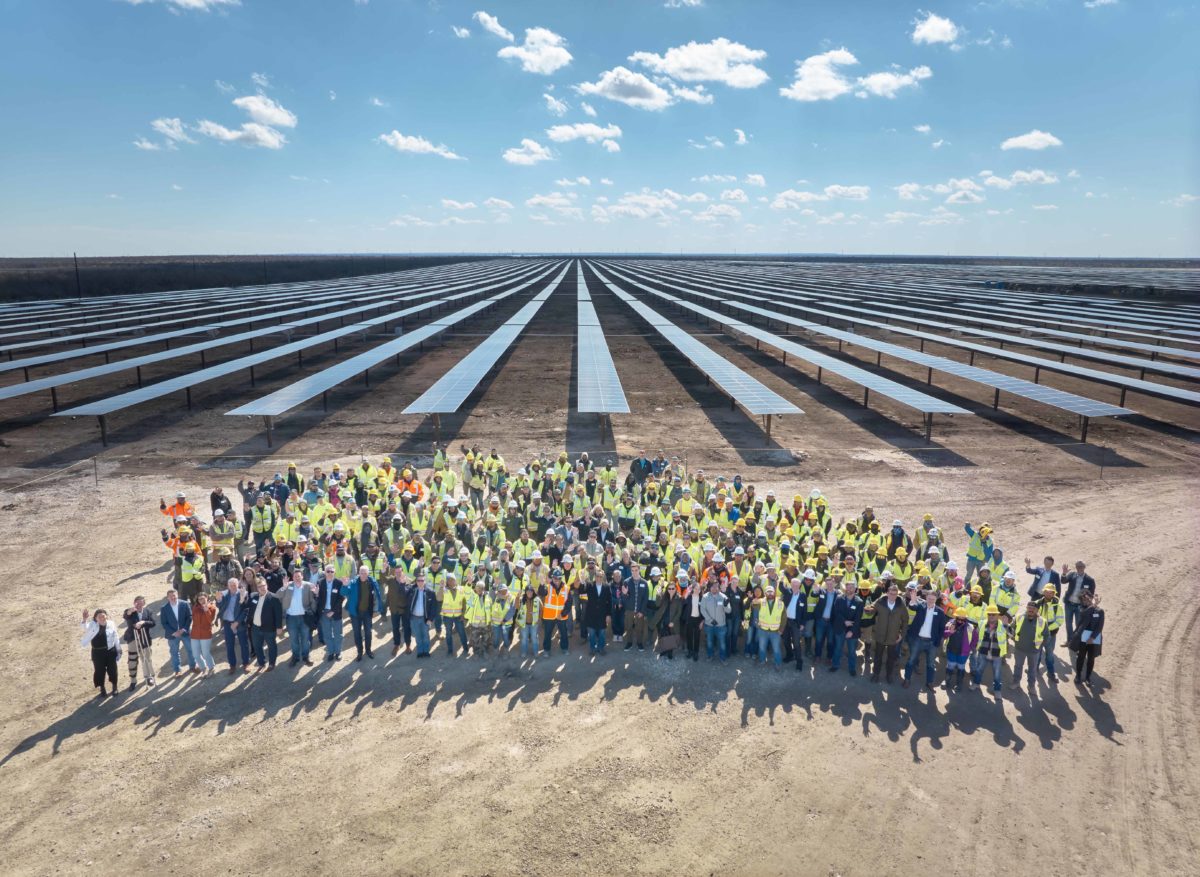In its 2023 Q3 market update report, American Clean Power (ACP) noted that solar continues to lead the way as the prominent clean energy source being actively built in the United States.
Cumulatively, operational clean power capacity in the U.S. has reached 243 GW, enough to power 65 million homes.
With nearly 56 GW online, Texas continues to be the state with the largest operational clean power portfolio. California has nearly 32 GW of clean power online, ranking second, and is the national leader in solar and energy storage active capacity.
ACP said that of the 5.5 GW of utility-scale solar, wind, and battery storage that came online in Q3, 3 GW of the total was represented by solar. Utility-scale solar capacity additions increased 31% year-over-year for Q3. Additionally, over 60% of clean power projects in project pipelines across the U.S. are solar PV.

The largest project that came online during the third quarter was the 265 MW first phase of NextEra’s Dunns Bridge Solar in Indiana. This was followed by Intersect Power’s 250 MW Oberon I Solar Project, and 7X Energy’s 203 MW Taygete II Solar Project in Texas.
Battery storage installations continue to grow rapidly, growing 63% year-over-year in Q3. The amount of battery energy storage projects in the pipeline have increased 50% year-over-year, said ACP. Battery storage saw its strongest third quarter ever, with 2.1 GW/6.2 GWh added. NextEra’s 325 MW / 1,300 MWh Desert Peak energy storage project was the largest standalone battery project brought online this quarter.
Power purchase agreements (PPA) are the main transaction type tied to these projects. Clean power buyers announced 3.2 GW of PPAs in Q3, a 55% decrease year-over-year. ACP said the slowdown was driven by a drop in corporate and industrial buyer announcements, while activity from utility buyers actually increased slightly in the third quarter.
While solar represents the bulk of the projects coming online and being developed for future installation, wind has the most active renewable capacity on the grid with 147 GW. This is followed by 83 GW of solar, 13 GW/38 GWh of battery storage, and 42 MW of offshore wind.
For the second quarter in a row, California led the nation in clean power installations with 1.9 GW of solar and storage added in the third quarter. Texas followed with 949 MW of clean power reaching commercial operations, and Arizona took third (516 MW). Only ten states added more than 100 MW in Q3.
At the end of Q3 2023, the nation’s solar project pipeline stood at 85 GW, representing roughly 60% of clean power capacity in the pipeline. Overall, 23 states had solar project pipelines exceeding 1 GW while five additional states have over 500 MW of solar capacity under development. Solar continues to be the most geographically diverse technology, said ACP.
As for projects actively under construction, solar had nearly 38 GW underway at the end of Q3. It represented 76% of the nation’s total of actively constructed projects at the time of the report.
NextEra leads as the largest clean power developer, with over 12 GW actively under development, representing 8% of the nation’s total. Invenergy holds second place with nearly 8 GW, followed by AES (6.1 GW), Orsted (5.9 GW), and Origis Energy (4.8 GW). Orsted’s development capacity is mostly dedicated to offshore wind, while the other market leaders are developing a mix of solar, energy storage, and some land-based wind.

This content is protected by copyright and may not be reused. If you want to cooperate with us and would like to reuse some of our content, please contact: editors@pv-magazine.com.









By submitting this form you agree to pv magazine using your data for the purposes of publishing your comment.
Your personal data will only be disclosed or otherwise transmitted to third parties for the purposes of spam filtering or if this is necessary for technical maintenance of the website. Any other transfer to third parties will not take place unless this is justified on the basis of applicable data protection regulations or if pv magazine is legally obliged to do so.
You may revoke this consent at any time with effect for the future, in which case your personal data will be deleted immediately. Otherwise, your data will be deleted if pv magazine has processed your request or the purpose of data storage is fulfilled.
Further information on data privacy can be found in our Data Protection Policy.